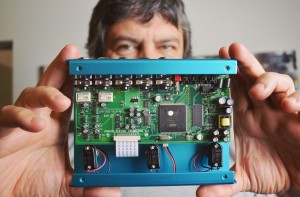
Analog Designer Gregg Stock
In addition to being a co-founder of Strymon, Gregg Stock is the man behind the analog circuit design in every Strymon product. Recently, he was kind enough to
Free US Shipping On Orders Over $49
Easy 30-Day Returns
Financing Available Through ![]()
Strymon co-founder Dave Fruehling is responsible for the digital systems behind the knobs and displays on Strymon effects and for the firmware architecture environment in which the sounds are created. Along with sound designer Pete Celi and analog designer Gregg Stock, Dave is integral to bringing Strymon effects to life. I recently enjoyed an opportunity to sit down with him for an interview. Read on to find out more about Dave and the path that lead him to Strymon, and get a closer look at what his work entails and how he approaches it.
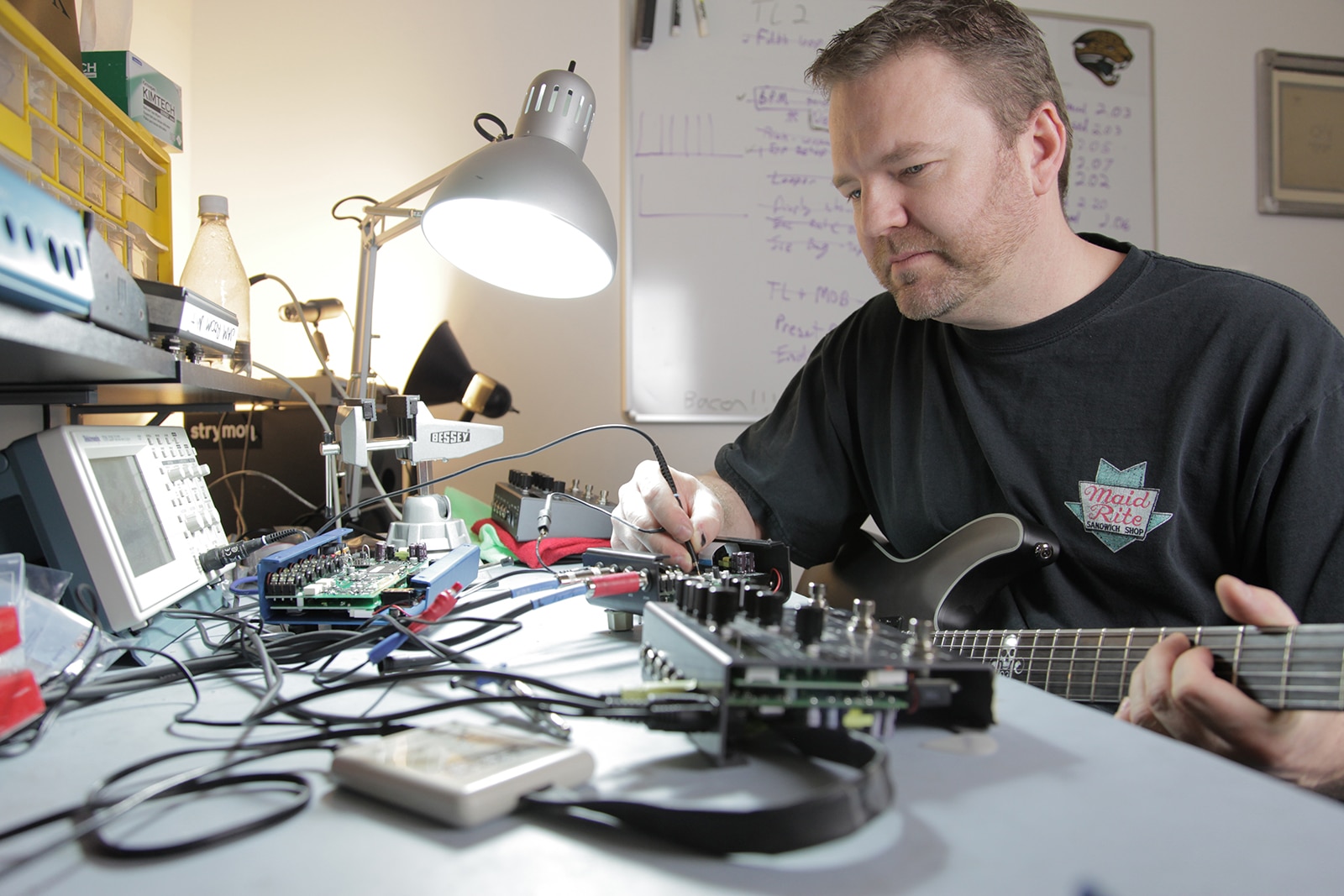
Where do you come from?
I’m originally from the Chicago area but kind of circled around, because my dad was a Motorola executive. He was an engineer and then worked his way up, so the Chicago area, South Florida, and Japan were the three areas that you would end up if you were a Motorola guy. So we moved around through those geographic locations.
You got to experience all three of those areas as you were growing up?
Yeah. Lived in Chicago, then Florida, then Japan, then Chicago and then back to Florida, and then to Illinois for some college and then back to Florida to finish college. I went to the University of North Florida which had a jazz guitar program—they were really starting to build a strong program. I’d started off going to college thinking I was going to be the next great jazz guitar player. So I got in there and after a semester or maybe two, I realized I just didn’t have the talent and was never going to make much of a living, because I wasn’t even good enough to get the gigs that only paid a little bit.
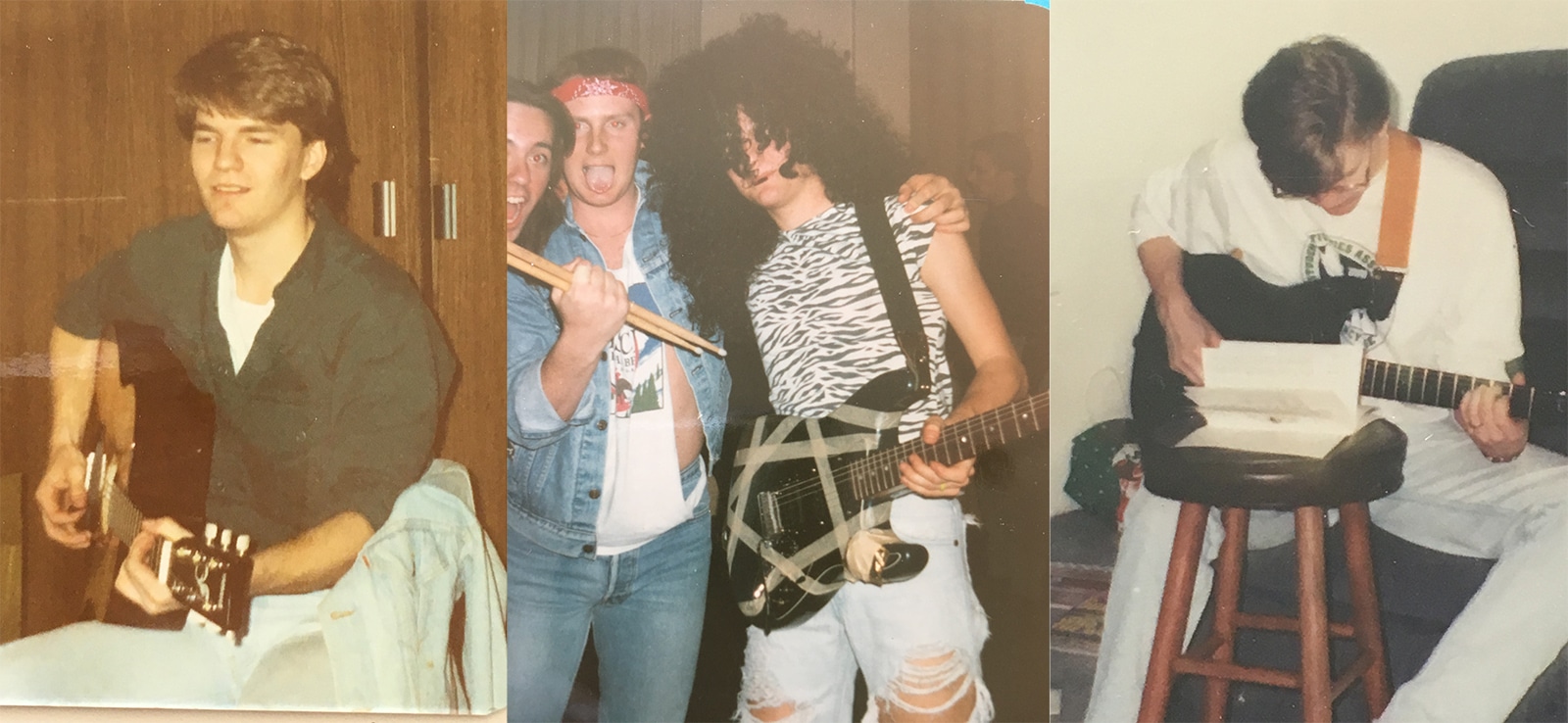
So at that time the school actually started an engineering program. And because it was a new program, if you had financial aid and could walk upright, you could pretty much get in. So I got in. I’d always been a tinkerer, I’d always played, built pedals and tore apart guitars and customized them, just like about half of guitar players out there do. I found out engineering was my thing, and had to go back and take so many classes, because it had all been music up to that point. I think it was after about six years total of college that I got my degree. So that’s how I got into engineering.
My brother-in-law, John Brinkman (who is now part of the Strymon team), was working for Seagate doing hard drive design. He got me my first job straight out of school and so that’s how I ended up in California.
At Seagate?
At Seagate, which is how I ended up here. They were in Simi Valley [California] at the time, so it’s ‘96 I think.
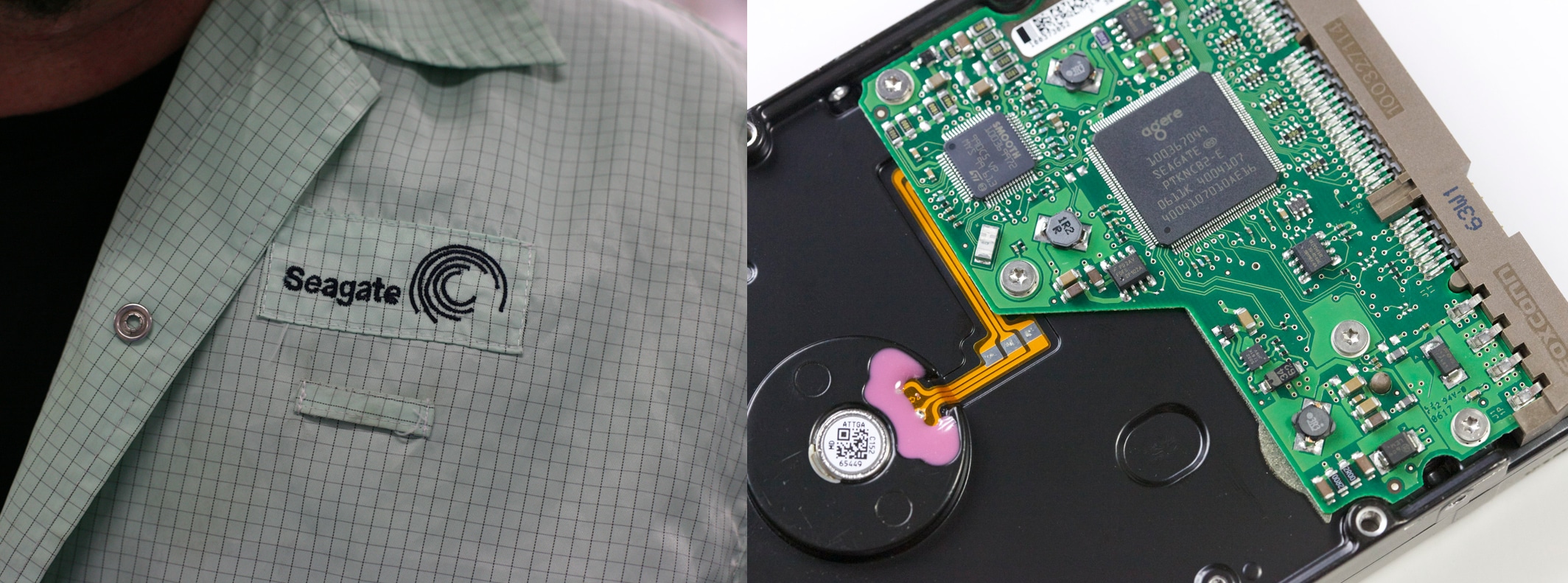
So I worked for Seagate for a couple of years, and then they decided to pull out of California. I found a business card for a guy that was at Alesis. So I called them up, just cold called them. And it was somewhat fortuitous because they were just getting ready to start what would eventually became the MasterLink. It was a hard disk CD recorder, kind of an ADAT-style format that was really the first stand-alone CD recorder/hard drive integration kind of thing. And they were just starting at trying to figure out how to write to a hard drive and do all that.
And here I was, the guy cold calling them saying, “hey I’m a hard drive engineer/musician—give me a job.” They said “sure, come on down for an interview.” At the same time, my brother-in-law John was out of a job, so I asked, “oh, also my brother-in-law, he’s a good engineer and a great bass player; can I bring him?” So we went down and interviewed, and two weeks later we were both working for Alesis designing a hard disk CD recorder. So that was my first job in the music world.

Was that after the ADAT?
That was after ADAT. That would’ve been like ‘98, ‘99. ADAT was actually right at the end of Alesis. I was there for about a year.
At the end of Alesis as you knew it.
Exactly, during I guess, the Keith Barr era. Which was cool. It was cool to be there and experience a lot of that, and see him and get to kind of interact with some of the classic product designers that I, as a musician growing up, had a bunch of their stuff.
So at the same time my wife and I just had our first child. We lived very far from Alesis and the drive was taking a toll. Line 6, which was called Fast Forward Designs at the time, had people at Alesis working on the ADAT because they did all the software for it. I met one of the Fast Forward guys there, and I thought: ah, here’s a good company close to home. So, this time I cold-called Marcus Ryle, one of the co-founders of Line 6, and just told him my story. So they ended up hiring me, and I was there for about five years. The first product I worked on was the Bass Pod.
That product served me well in my life.
Excellent. So I did the first round of that and the Bass Pod Pro, the rack mount version. And then I started working on Variax with Pete [Celi] and Eric Kirkland. Worked on that for quite some time. And in the interim I worked on the Spider III amplifiers, using my single processor architecture. Then basically got to the end of the Variax stuff and the Variax Acoustic. And that’s when the whole Damage Control thing kind of came together. I heard what they were working on, wanting to create some digital products, and I said, “We gotta get Pete.” Pete you know, he’s the master. And so I joined Damage Control (which would eventually become Strymon) and within a few days Pete came over and joined us as well. And that was back in June 2004. So that’s basically my back story.
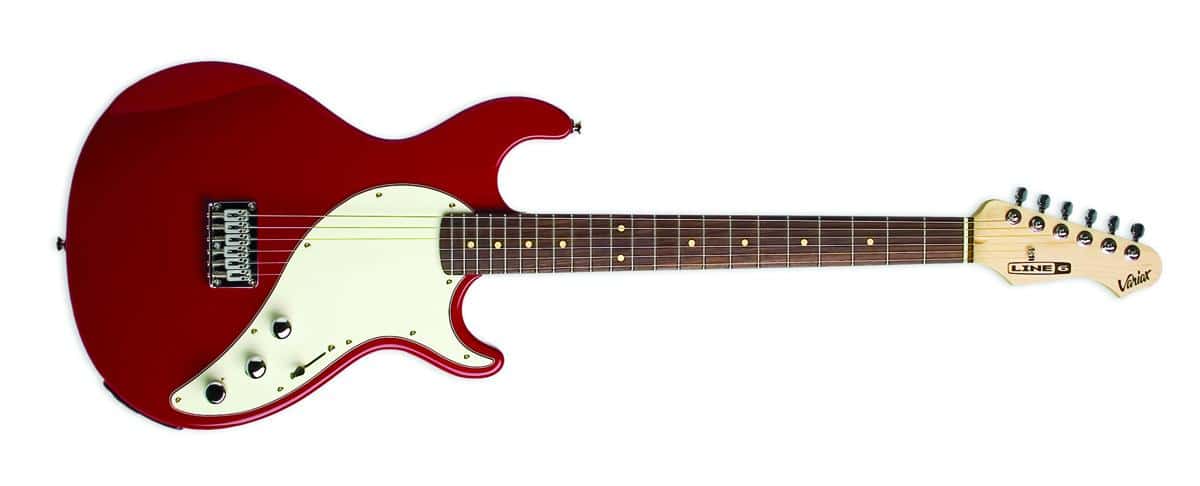
So what exactly do you do at Strymon? When Strymon releases a pedal, what part of you is in that?
My goal and I guess my self-appointed duty here is to create a software environment for Pete to work in, where he doesn’t have to think about the detailed innards of an embedded system and he can just be creative with the sound. In the software literally he’s got a chunk of audio data that comes in and I tell him where to put it when he’s done with it. And that’s the idea, that he doesn’t have to worry about the rest of the system. So I’m more or less the systems integration kind of thing. I will design the digital side of the hardware, the non-audio digital stuff. So all the MIDI, and the knobs, and displays and encoders and all that kind of stuff: I do all that. The systems integration is probably the best way to put it from a product standpoint. As you know, we all contribute to the user interface and how it works.
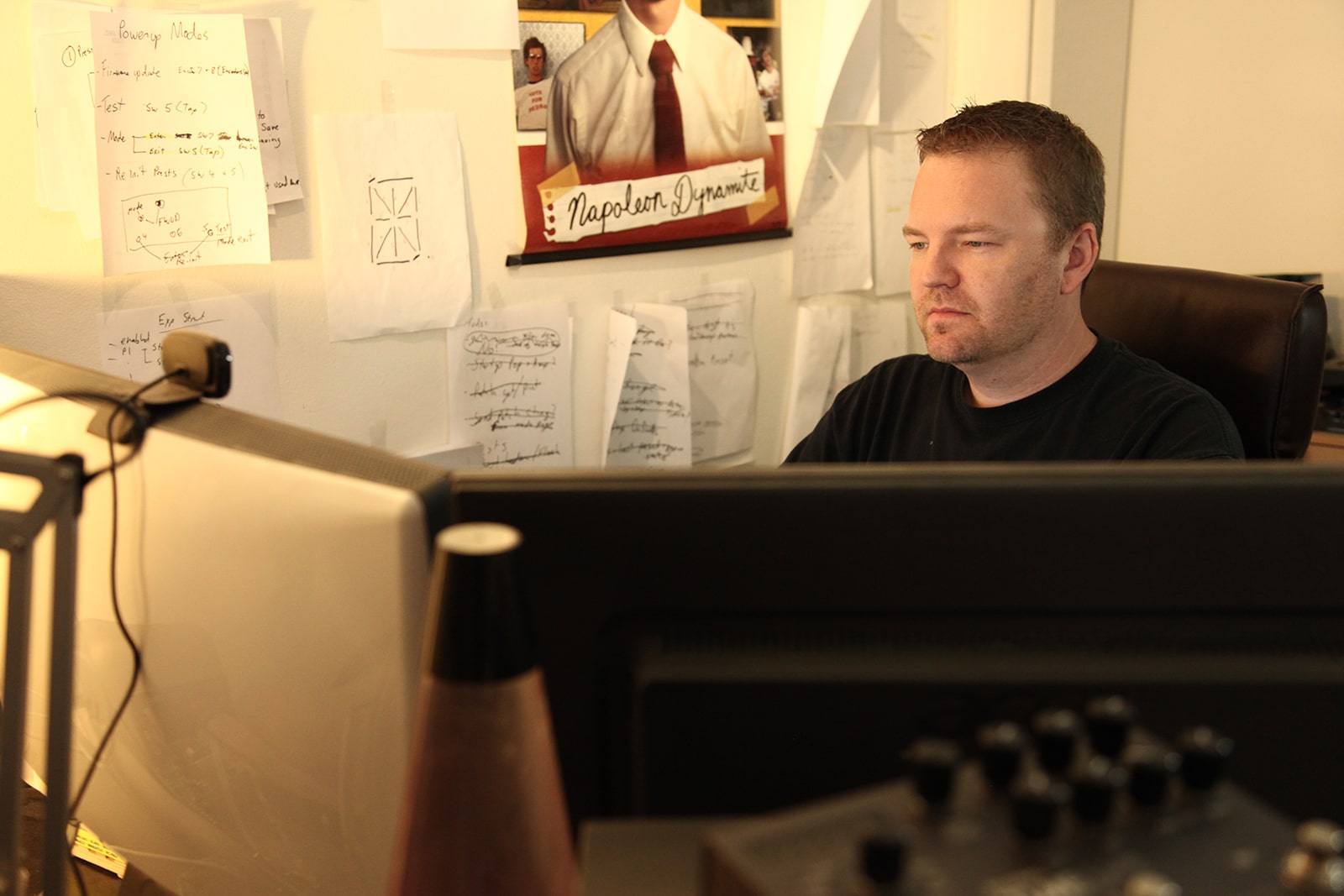
Sure, I can only imagine that for instance, since you’re working on the interface, you’re working with the encoders. Then even if it’s getting into someone else’s realm, you care what the knob feels like and how it reacts…
Right. Exactly. And Pete and I work very closely together. That’s always kind of been the thing. We don’t have these two separate departments, like, a DSP department that just does algorithms and a systems department that does all the hardware and firmware. We work together very closely, which is great because it allows things to happen. We sit down for five minutes and resolve eight hours worth of questions to keep things moving. So a big part of my job is facilitating the creative side. I’m certainly not an audio processing guy, but something like the looper on TimeLine—I’ll design something like that, that’s the commodity kind of audio processing, not the creative, artistic processing. I think from a product standpoint that’s basically my role.
It sounds like what you do really has a lot to do with the user experience.
Yes, that’s my end of it: the user interface, essentially. But as I said, we’re all kind of involved in all aspects to some extent. There will be things that may not be my job that I’ll be a part of, and vice versa.
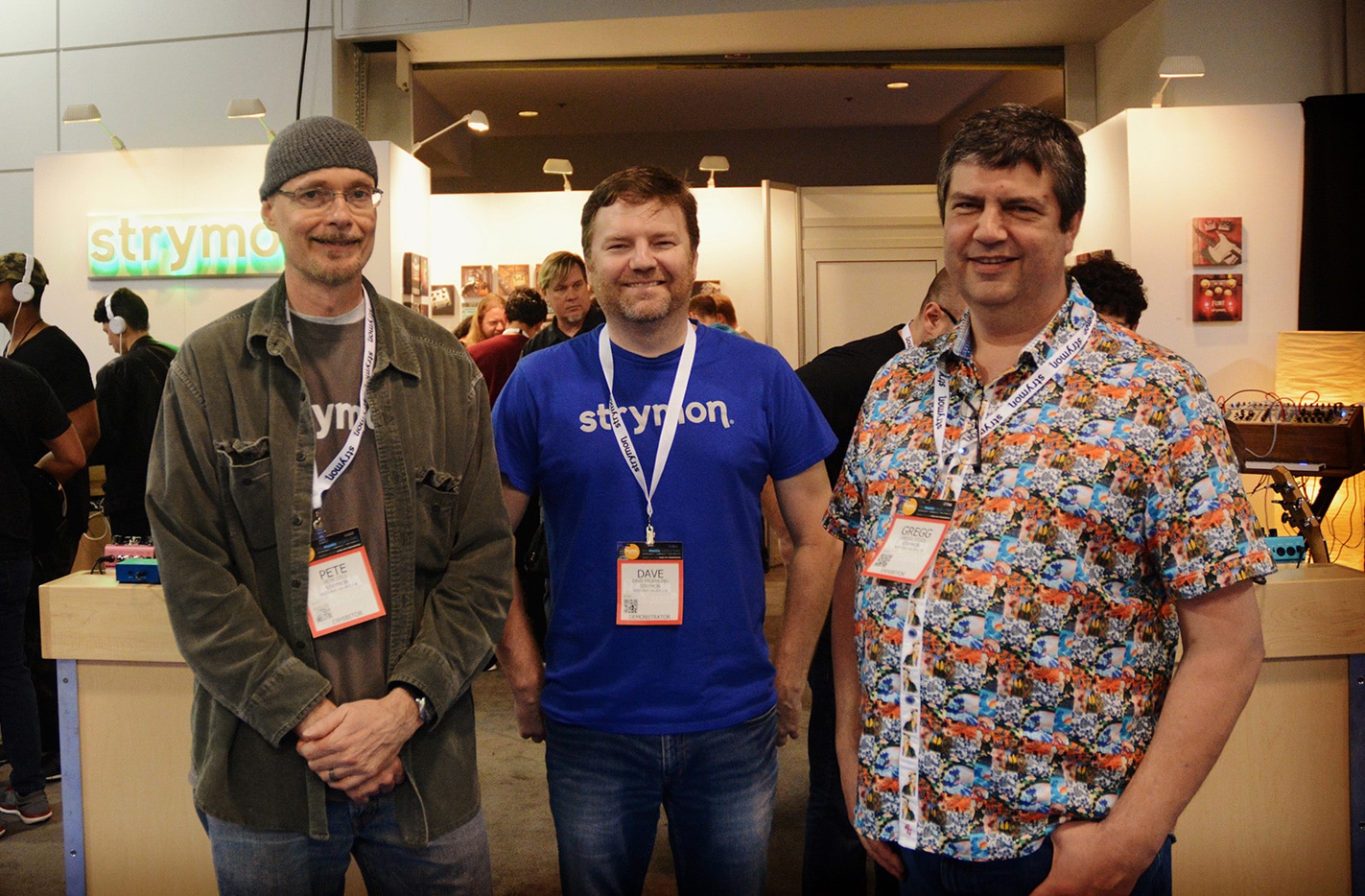
Do you have a goal, or philosophy, or sort of overall aim, that you personally try to achieve when you work on a Strymon product?
Yeah. I think the key is simplicity and robustness. Not having things break in the field. You’re always going to have the occasional bug or something that you need to deal with, but we pride ourselves on releasing stuff that’s really solid. You know, we haven’t ever had, knock on wood, catastrophic problems. But that’s really it: robust, easy to use. Things that are fault tolerant. That’s always been our goal.
Fault tolerant?
If you do stupid shit to it, it doesn’t break.
[Laughing] Got it.
So from a design standpoint, and as engineers we talk about the artistry of the audio stuff. It’s always nice as an engineer to be clever and creative and come up with elegant solutions to things. I like to think that a lot of our products have a world-class design. We have real-world technical expertise that we gained from working outside of this industry. Not that there’s anything wrong with non-degreed engineers or people with less formal training. There’s some brilliant stuff that comes out of that. But it does enable us to avoid a lot of pitfalls that we made early in our careers. We learned from the established talented engineers outside of our industry.
Is there a particular product where you felt especially proud of your success in some aspect of that product?
That’s a tough question because we’re such a small group and we interact so tightly. I think there’s more of me in a Timeline and a BigSky. And there were some engineering challenges in those where I felt like I came up with pretty cool creative solutions to some of the challenges. And there’s some “me design” in there that the user will never really see, things that made them better, more robust products. And some of the clever computer engineering design things in there. So I’m definitely proud of some of the inner workings, not the way that Pete might say he’s proud of the way something sounds, but under the hood, there’s some cool stuff in there that I’m proud of.
Cool.
But I will say, that everybody here has to wear many hats.
It’s hard to say that you’re proud of something without including that you’re proud of everyone else who had a hand in it, right?
Absolutely. And you know, sometimes it’s hard for me to remember what was my idea, and what was somebody else’s idea. And we never really do that–we don’t give out awards for “so-and-so came up with this great thing.” There’s certainly stuff that people came up with that we do remember, but you know we all just like doing what we do, and we all get it done. We like to share our ideas. Everybody’s ideas are consumed and drawn around, and you’re just as likely to tell one of the founders that their idea’s not too good as you would anybody in the company, like a new guy, and vice versa. Nobody’s afraid to come up with a great idea, and show their best stuff, and to come running into your office and say “come check this out!”
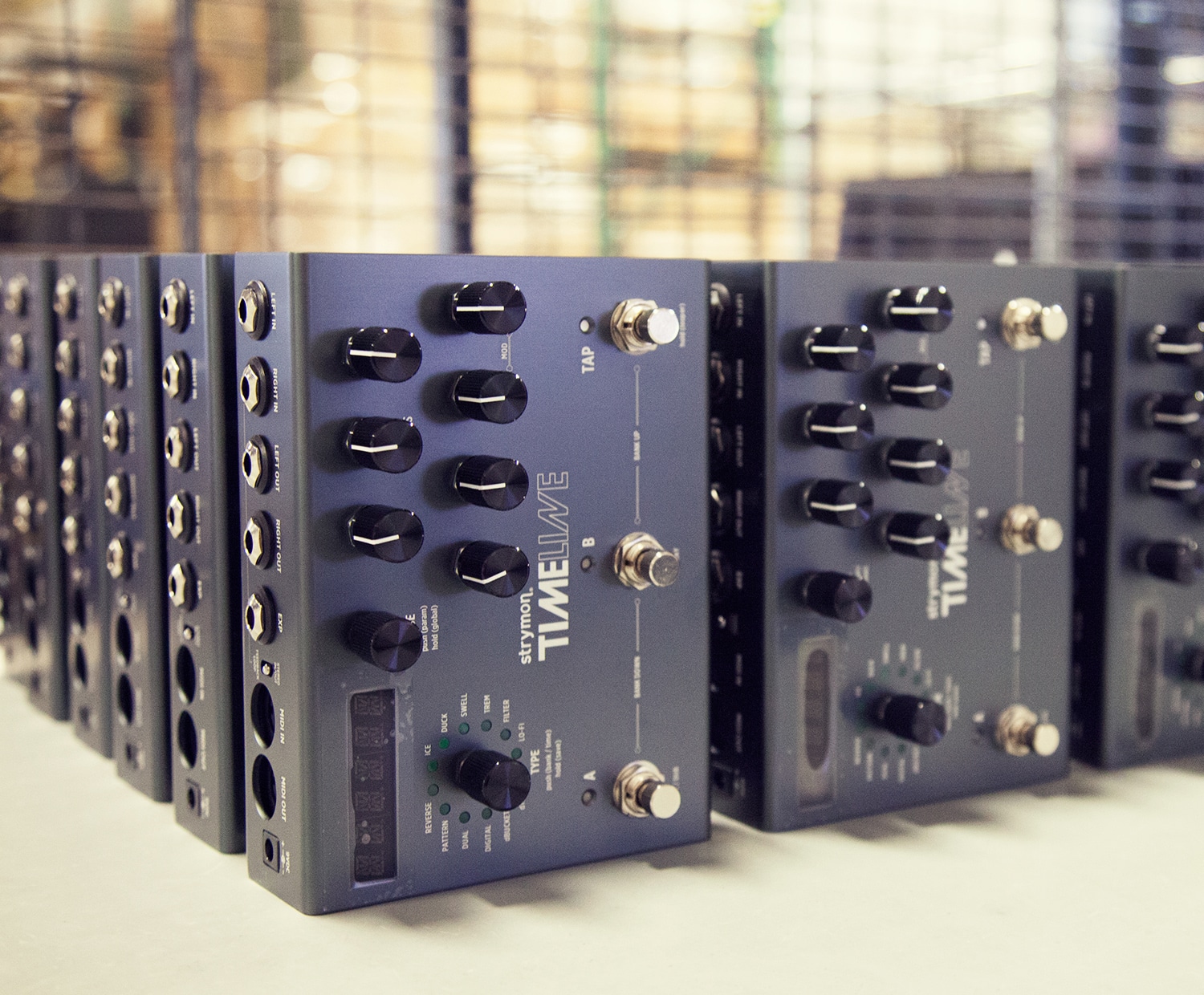
I think you’ve just started answering my next question, which is, what is it about working at Strymon that makes it a good fit for you?
Well you know there certainly is a lot of freedom. Freedom of expression. If I want to change the way the hardware works or the way the software works, I don’t have to go to anybody, you know. I just say “hey Pete I’m doing this.” Your voice is loud and it’s heard. And that’s really fun as an engineer. You get that sort of feeling like you’re sitting at your workbench in your garage doing whatever you want to do. We’ve been able to maintain that and stay a small, lean group of people.
And you know, part of what I love about it is, I might be writing code or debugging hardware, and then I might go down to the warehouse and run some ethernet cable because somebody needs some. Or you know, “hey, we need a forklift.” Ok, I’ve never bought a forklift. Let’s go research forklifts and figure out how to do that kind of stuff. So that’s neat. We put our health care plan in action a couple of years ago, and that was one of those things where maybe you really don’t know much about it, but you jump in and you start figuring it out. So there’s a lot of different hats. And the stuff that I don’t like, fortunately now we can afford to have somebody come and fix the plumbing when we need it!
Thanks Dave, I think I’ve got everything that I need.
More than you ever wished for!
Seagate photos courtesy of Jeff Eaton and Robert Scoble, Creative Commons Attribution licenses.
Subscribe to our newsletter to be the first to hear about new Strymon products, artist features, and behind the scenes content!

In addition to being a co-founder of Strymon, Gregg Stock is the man behind the analog circuit design in every Strymon product. Recently, he was kind enough to
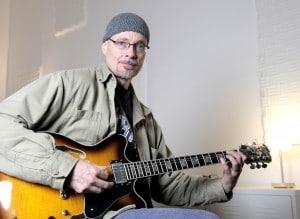
Strymon co-founder Pete Celi is responsible for the sound design and DSP algorithm creation for all the Strymon pedals that use DSP. Recently I had the
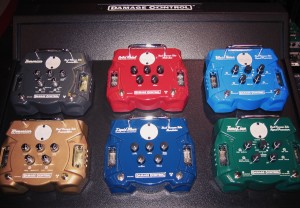
It was 2005, and I was in eighth grade. I had just picked up the guitar and was taking lessons, so my friend Richard thought I’d